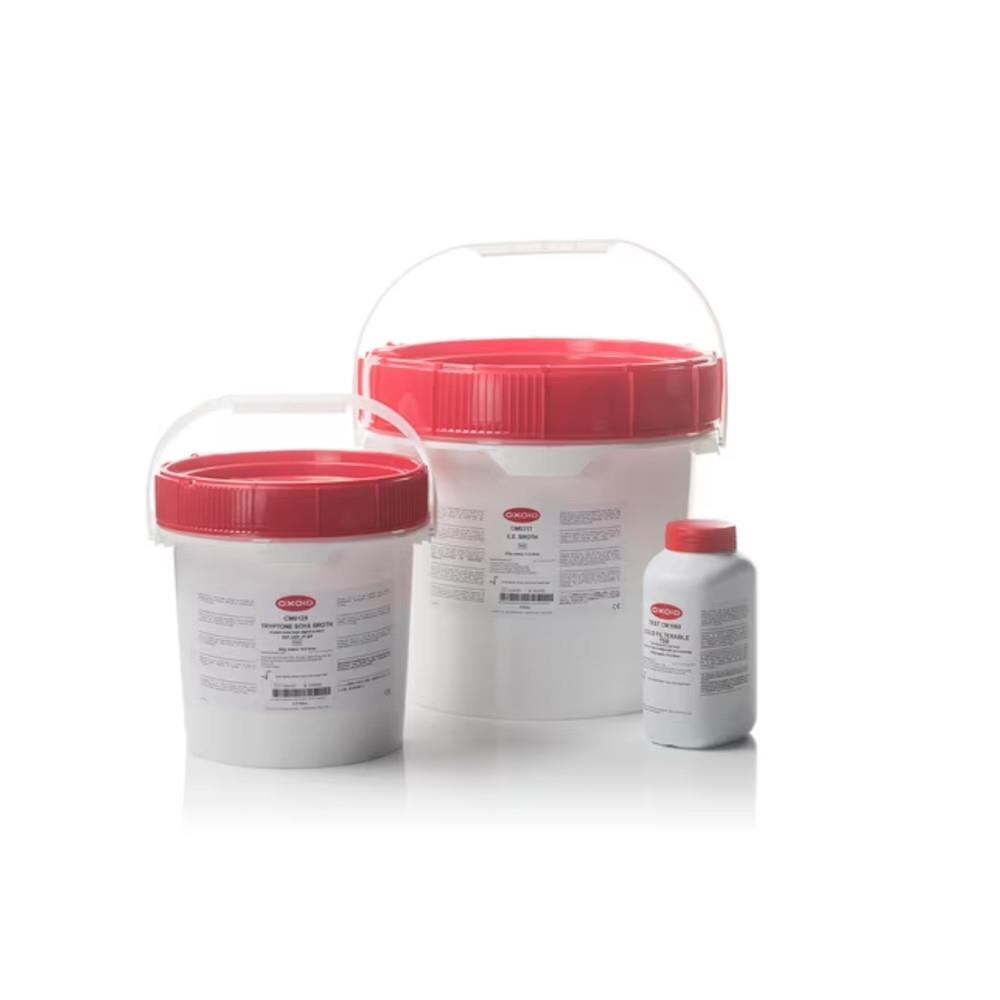Thermo Scientific™ Oxoid™ Bismuth Sulphite Agar (Modified Wilson & Blair Medium), 500G
Catalog No :
CAS Number :
Brand :
In Stock
Specifications:
| Application | Microbiology | ||
| Storage Temperature | Room Temperature | ||
| Product Type | Culture Medium | Forms | Powder |
| Product Brand | Thermo Fisher Scientific™ | ||
| Product Grade | Microbiology grade | ||
The Thermo Scientific™ Oxoid™ Bismuth Sulphite Agar (Dehydrated) is a highly selective medium used for the isolation and preliminary identification of Salmonella typhi and other salmonellae from various samples, including food, water, sewage, and clinical specimens. Based on the Modified Wilson & Blair Medium, this agar utilizes bismuth sulphite and brilliant green as selective agents to suppress the growth of non-target organisms, such as coliforms, while promoting the growth of salmonellae.
Key Features
- Selective Medium:
- Incorporates bismuth sulphite and brilliant green to selectively inhibit coliforms and other non-salmonellae microorganisms.
- Easy-to-Read Results:
- Salmonella colonies appear black with a metallic sheen due to hydrogen sulphide production and the reduction of sulphite to black ferric sulphide.
- Robust for Contaminated Samples:
- Freshly prepared medium exhibits strong inhibitory action, making it suitable for heavily contaminated samples.
- Wide Application Range:
- Suitable for use in food safety, water quality testing, clinical diagnostics, and environmental microbiology.
Applications
1. Food Microbiology
- Detection and isolation of Salmonella spp. in food products, including raw meats, dairy, and processed foods.
2. Water Quality Testing
- Identification of Salmonella spp. in sewage, drinking water, and recreational water sources.
3. Clinical Microbiology
- Isolation of Salmonella typhi and other salmonellae from fecal and other pathological specimens.
4. Environmental Microbiology
- Monitoring Salmonella spp. contamination in industrial effluents and soil samples.
Specifications
| Attribute | Details |
|---|---|
| Description | Bismuth Sulphite Agar |
| Form | Powder |
| Product Type | Selective Agar |
| Selective Agents | Bismuth Sulphite and Brilliant Green |
| Applications | Salmonella spp. detection and isolation |
| Colony Appearance | Black with metallic sheen |
Preparation Instructions
- Suspend: Suspend 51.5g of Bismuth Sulphite Agar in 1 liter of distilled water.
- Mix and Heat: Heat with frequent agitation to dissolve the powder completely. Do not autoclave.
- Cool and Dispense: Cool to 50°C and pour into sterile Petri dishes. Allow the medium to solidify.
- Storage: Freshly prepared plates are highly selective and should be stored at 4°C for up to 3 days if reduced selectivity is desired.
Diagnostic Features
| Characteristic | Observation |
|---|---|
| Colony Morphology | Black colonies with a metallic sheen. |
| Hydrogen Sulphide Production | Black coloration due to sulphite reduction to ferric sulphide. |
| Selectivity | Inhibits coliforms and other non-target bacteria. |
Advantages
- Highly Selective: Suppresses non-salmonellae organisms, enhancing recovery of Salmonella spp.
- Distinctive Colony Morphology: Easily distinguish Salmonella colonies by their characteristic appearance.
- Robust for Contaminated Samples: Suitable for heavily contaminated specimens due to its strong inhibitory action.
- Wide Applications: Effective for food, water, clinical, and environmental samples.
Storage and Stability
- Storage: Store the dehydrated medium at 10–30°C in a dry environment.
- Shelf Life: Refer to product label for expiration date.
- Prepared Plates: Fresh plates should be used immediately or stored at 4°C for up to 3 days if less selectivity is needed.
References
- Wilson, W.J. and Blair, E.M. (1926). J. Path. Bact., 29:310.
- Harvey, R.W.S., Price, T.H. (1967). J. Hyg. Camb., 65:473.
- FDA Bacteriological Analytical Manual (BAM).
Packaging
- Product: Bismuth Sulphite Agar
- Quantity: Available in 500g packages
- Yield: Prepares approximately 9.7L of medium per 500g.
The Thermo Scientific™ Oxoid™ Bismuth Sulphite Agar is a reliable and effective selective medium for isolating and identifying Salmonella spp., including Salmonella typhi, in a wide range of sample types. Its high selectivity, robust inhibitory action, and clear diagnostic features make it an indispensable tool for food safety testing, clinical diagnostics, and environmental monitoring.




 0
0
